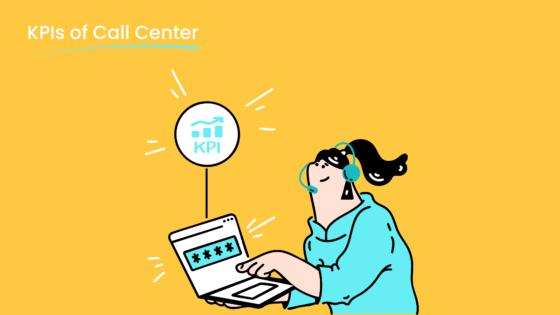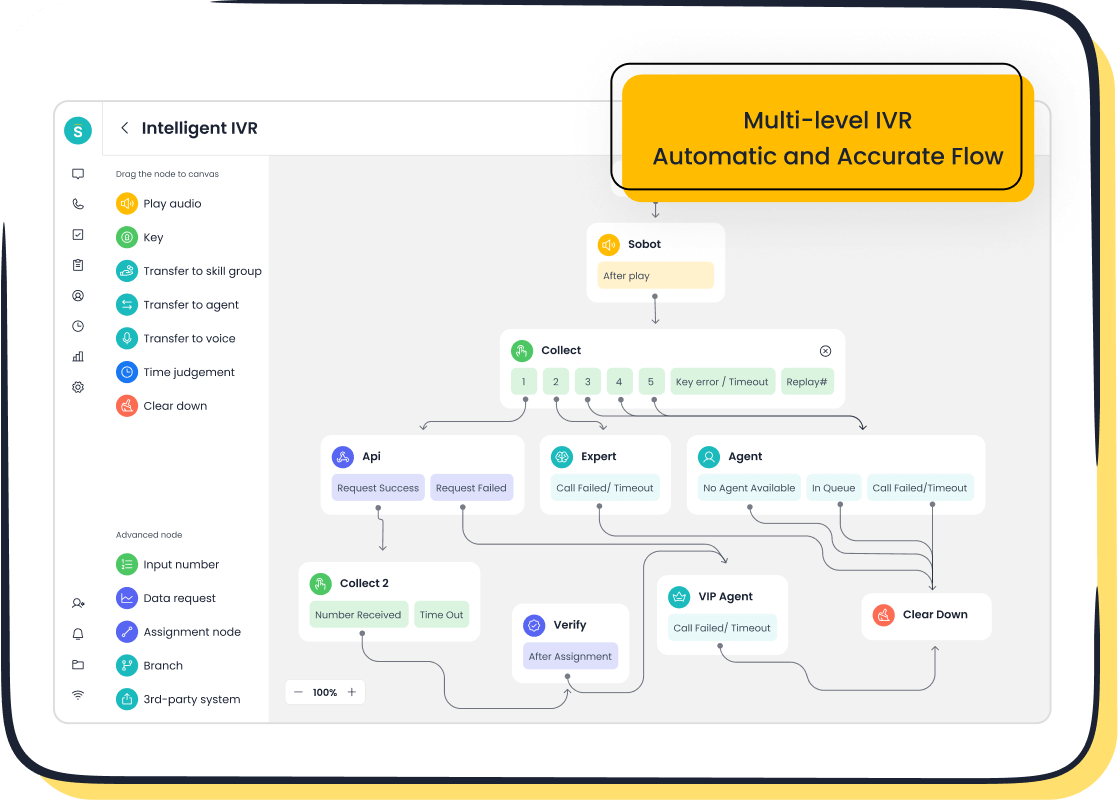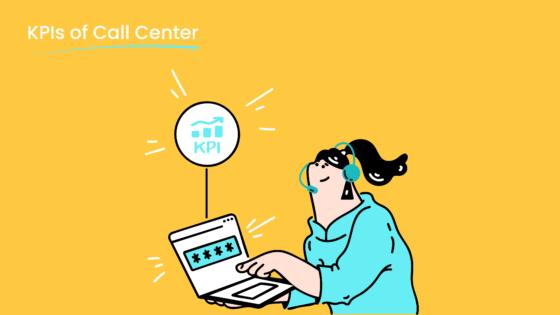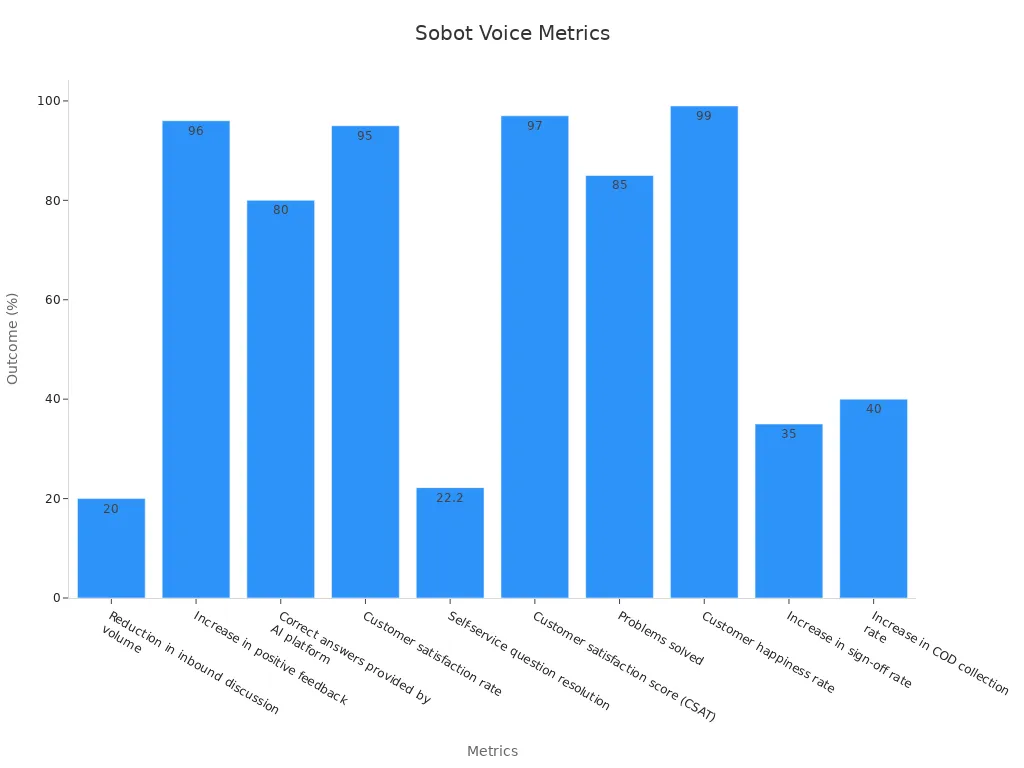What Are the Best Tools to Improve Call Center Agent Productivity

Improving agent productivity on contact center floors is no longer just a goal—it’s a necessity. You know how challenging it can be for agents to juggle customer inquiries, manage data, and meet performance metrics. That’s where technology steps in. With tools like advanced call center software and automation, businesses are solving these challenges faster than ever. Did you know that nearly 70% of companies already use AI-based technologies in their call centers, and this market is expected to grow to over $4 billion by 2027?
Sobot is at the forefront of this transformation. By integrating innovative technology, such as smart call routing and real-time analytics, Sobot helps businesses reduce idle time and improve agent productivity on contact center floors. Whether you’re aiming to boost customer satisfaction or streamline operations, tools like these are game-changers for call center productivity.
Workforce Management Tools for Call Center Productivity

Features of Workforce Management Tools
Workforce management tools are designed to simplify the complex task of managing agent schedules and workloads. These tools come with features that make your job easier and more efficient. For instance, they offer real-time monitoring, allowing you to track agent availability and performance instantly. Many tools also include automated scheduling, which eliminates the guesswork in assigning shifts.
A study on workforce management tools highlights their reliability and usability. Here's a quick breakdown:
| Feature Category | Grade | Description |
|---|---|---|
| Adaptability | B | Needs improvement in integration with personal productivity apps. |
| Capability | A- | Strong functionalities for workforce management. |
| Manageability | A- | Effective features that meet user needs. |
| Reliability | A | Robust software architecture ensures high reliability. |
| Usability | A- | User-friendly interface enhances the experience. |
| TCO/ROI | A- | High value and return on investment. |
These features ensure that your team operates smoothly, even during peak hours.
Benefits of Scheduling and Forecasting
Scheduling and forecasting are game-changers for contact center productivity. Accurate forecasting helps you predict call volumes and plan resources effectively. This means you can avoid overstaffing or understaffing, which directly impacts efficiency.
Here’s how scheduling and forecasting improve operations:
- Establishing forecasting accuracy benchmarks helps you refine scheduling strategies.
- Predicting SLA variance allows you to manage resources proactively, improving client satisfaction.
- AI-powered reforecasting adjusts schedules in real-time, aligning agent availability with demand.
For example, a retail chain optimized staffing during peak times, reducing labor costs by 15% and improving customer satisfaction by 20%. These benefits show how essential these tools are for maintaining high service levels.
How Workforce Management Tools Improve Agent Efficiency
Workforce management tools don’t just help managers—they empower agents too. By automating repetitive tasks like shift swaps and time-off requests, these tools free up agents to focus on what matters most: delivering excellent customer service.
Case studies reveal impressive results. A financial institution increased agent adherence by 20% while reducing staff by 10%, all without compromising service levels. Similarly, a manufacturing company reduced downtime by 20% through efficient scheduling, cutting overtime costs by 10%. These examples prove that workforce management tools are essential for boosting efficiency and reducing operational costs.
Sobot’s solutions, like its omnichannel platform, integrate seamlessly with workforce management tools. This ensures that your agents have everything they need to succeed, from real-time data to automated workflows. With Sobot, you’re not just managing a team—you’re building a powerhouse of productivity.
Customer Relationship Management (CRM) Systems
Customer Relationship Management (CRM) systems are the backbone of modern call centers. They help you manage customer interactions, streamline workflows, and improve overall contact center productivity. Let’s dive into how CRM software can transform your operations.
Key Features of CRM Software
CRM software comes packed with features that make your job easier and your customers happier. Here are some standout capabilities:
| Key Feature | Impact on Call Center Success | Statistical Significance |
|---|---|---|
| Technology-based CRM | Positively influences first call resolution | Significant (p < 0.05) |
| Perceived service quality | Positively influences caller satisfaction | Moderate influence |
| First call resolution (FCR) | Statistically significant to caller satisfaction | Significant (standardized estimate 0.19) |
| Overall CRM impact on service quality | Explains 42% of variations in service quality performance | High R² |
These features ensure that your agents have the tools they need to deliver a seamless customer experience. For example, technology-based CRM systems improve first-call resolution rates, which directly boosts customer satisfaction.
Benefits of CRM in Enhancing Customer Interactions
A good CRM system doesn’t just store data—it transforms how you interact with customers. Here’s what you can expect:
- A 30% increase in B2B sales.
- 85% of CRM users report an improved customer experience.
- Enhanced customer service, better analytics, and higher productivity.
Imagine this: a customer calls your center, and your agent instantly sees their purchase history, preferences, and past interactions. This level of personalization not only improves the customer experience but also builds loyalty. With Sobot’s CRM integrations, you can achieve this level of efficiency effortlessly.
How CRM Systems Improve Agent Access to Customer Data
Access to centralized customer data is a game-changer for agents. CRM systems eliminate information silos, allowing your team to work collaboratively and efficiently. Here’s how:
- Unified client data ensures everyone is on the same page.
- Cloud technology allows agents to access information from any device.
- Simplified data retrieval saves time and boosts productivity.
For instance, automated project updates keep clients informed, while centralized access ensures agents can quickly address customer needs. Sobot’s CRM solutions take this a step further by integrating seamlessly with your existing systems, giving your agents the tools they need to excel.
Sobot Voice/Call Center: A Comprehensive Call Center Solution

Intelligent IVR and Smart Call Routing
Imagine calling a support line and being instantly connected to the right agent without waiting or being transferred multiple times. That’s the magic of Sobot’s intelligent IVR and smart call routing. These tools ensure your customers get the help they need quickly and efficiently. The IVR system allows you to customize greetings, create menus, and route calls to the right team or agent. It’s like having a virtual receptionist that works 24/7.
Smart call routing takes it a step further by using automatic call distribution to match calls with agents who have the right skills. This reduces wait times and improves first-call resolution rates. For example, a company using Sobot’s solution saw a 20% drop in inbound discussion volume and a 96% increase in positive feedback. These features not only enhance customer satisfaction but also boost agent productivity by ensuring they handle calls they’re best equipped for.
| Improvement Type | Description |
|---|---|
| Enhanced Customer Satisfaction | Faster connections and fewer transfers lead to happier customers. |
| Reduced Wait Times | Optimized call distribution minimizes waiting. |
| Better Call Handling | Calls are routed to agents with the right expertise. |
| Increased Agent Efficiency | Agents focus on tasks that match their skills, improving overall output. |

Unified Workspace for Enhanced Agent Productivity
Managing multiple tools and systems can overwhelm your agents. Sobot’s unified workspace solves this problem by bringing everything into one place. Agents can access customer data, call logs, and communication tools from a single interface. This reduces the time spent switching between platforms and helps them focus on delivering excellent service.
A unified workspace also integrates AI-powered tools that provide real-time insights and personalized recommendations. For instance, agents can instantly view a customer’s history and preferences, making interactions smoother and more effective. Studies show that such workspaces reduce cognitive load and improve agent productivity significantly. With Sobot, your team can handle more calls in less time while maintaining high-quality service.
- Key Benefits of a Unified Workspace:
- Streamlined operations with all tools in one place.
- Faster access to customer information for quicker resolutions.
- AI-driven insights for personalized service at scale.

Real-Time Monitoring and Analytics for Performance Improvement
Keeping track of your team’s performance is crucial for maintaining high service levels. Sobot’s real-time monitoring and analytics tools give you the data you need to make informed decisions. Supervisors can track key metrics like average handle time, first-call resolution rates, and customer satisfaction scores. This helps identify areas for improvement and ensures your team stays on track.
For example, real-time analytics can highlight patterns in customer behavior, allowing you to adjust strategies proactively. Sobot’s tools also provide immediate solutions to customer inquiries, reducing abandonment rates and improving overall efficiency. With these insights, you can address issues before they escalate, ensuring a seamless experience for both your agents and customers.
| Metric | Description |
|---|---|
| Average Handle Time | Tracks how long agents take to resolve calls, improving efficiency. |
| First Call Resolution Rate | Measures the percentage of issues resolved on the first attempt. |
| Abandonment Rate | Highlights the percentage of calls dropped before being answered. |
| Customer Satisfaction Score | Assesses how happy customers are with the service provided. |

Sobot’s real-time monitoring tools not only improve contact center productivity but also ensure your team delivers exceptional service every time.
Knowledge Base and Self-Service Platforms
Features of Knowledge Base Software
Knowledge base software is like a digital library for your customer support team. It organizes information in a way that’s easy to access and use. Some standout features make these tools indispensable:
| Feature | Description |
|---|---|
| User-Friendly Interface | Lets support agents navigate and create content effortlessly. |
| Powerful Authoring Capabilities | Simplifies content creation and editing, even for non-technical users. |
| Dynamic Search Functionalities | Provides accurate results, even for partial or misspelled queries. |
| Insightful Analytics | Generates reports to identify gaps and improve the knowledge base. |
| Multilingual Support | Translates content for global audiences, ensuring inclusivity. |
| AI-Powered Assistance | Enhances search and categorization, saving time for agents. |
These features empower your team to find answers quickly, reducing frustration and boosting productivity. For example, dynamic search functionalities ensure agents spend less time hunting for information and more time solving customer issues.
Benefits of Self-Service Platforms for Agents and Customers
Self-service platforms are a win-win for everyone. They let customers solve problems independently while freeing up support agents to focus on complex tasks. Here’s why they’re so effective:
- Customers love them. According to Harvard Business Review, 81% of customers try to solve problems on their own before contacting support.
- They’re efficient. Microsoft found that 77% of consumers have used self-service portals, and 90% expect brands to offer them.
- They boost satisfaction. Aspect Software reports that 73% of customers prefer solving issues independently.

For agents, self-service platforms reduce repetitive inquiries, allowing them to focus on high-value tasks. Sobot’s AI-powered chatbot is a great example. It handles routine questions, giving your team more time to tackle complex customer support challenges.
How Self-Service Tools Reduce Agent Downtime
Self-service tools don’t just help customers—they’re a game-changer for your agents too. By deflecting routine inquiries, these tools save agents valuable time. For instance, integrating AI like Now Assist GenAI has improved agent productivity by 15%. Agents can focus on resolving complex cases instead of summarizing or deflecting simple ones.
Here’s how self-service tools make a difference:
- Retailers use self-service data integration to improve marketing strategies.
- Manufacturers enhance supply chain efficiency by reducing stock shortages.
- Government agencies provide public access to datasets, ensuring compliance with privacy laws.
Sobot’s omnichannel solution takes this further by integrating self-service options with a unified workspace. This ensures agents have everything they need to deliver exceptional service while minimizing downtime.
Call Analytics and Reporting Tools

Call analytics and reporting tools are essential for improving agent performance and contact center productivity. These tools provide actionable insights that help you optimize operations, address performance gaps, and deliver better customer experiences. Let’s explore their features, benefits, and impact.
Features of Call Analytics Software
Call analytics software comes packed with features that make managing your contact center easier. Here’s a quick look at what these tools offer:
| Feature | Description |
|---|---|
| Real-time monitoring | Tracks call volume and wait times, enabling immediate adjustments. |
| Actionable insights | Provides data to improve processes and customer interactions. |
| Integration with existing systems | Ensures seamless data flow between analytics and platforms like CRM. |
| Emotional Intelligence Detection | Recognizes emotional cues in customer voices for better understanding. |
| Keyword Spotting | Identifies key phrases to focus on important customer issues. |
| Silent Period Analysis | Highlights pauses in conversations to identify communication gaps. |
| Instant access to metrics | Offers visibility into performance metrics for quick decision-making. |
| Omnichannel approach | Supports interactions across multiple channels, enhancing satisfaction. |
These features empower you to monitor and refine your operations in real time. For example, keyword spotting can help agents focus on critical customer concerns, while emotional intelligence detection improves how they handle sensitive situations.
Benefits of Monitoring and Improving Agent Performance
Monitoring agent performance with analytics tools leads to measurable improvements. You can track key metrics like Average Handle Time (AHT), First Call Resolution (FCR), and Customer Satisfaction (CSAT) to identify areas for growth. Here’s how these tools make a difference:
| Performance Metric | Description |
|---|---|
| Average Handle Time (AHT) | Measures the average time agents spend on calls. |
| First Call Resolution (FCR) | Tracks how often agents resolve issues on the first interaction. |
| Customer Satisfaction (CSAT) | Gauges customer happiness through surveys or feedback. |
| Quality Scores | Evaluates call handling based on specific criteria. |
Imagine reducing AHT by 15% or improving FCR rates significantly. These changes not only boost customer satisfaction but also reduce repeat calls, saving time and resources. Dashboards and call analytics tools make it easy to monitor these metrics and adjust strategies proactively.
How Analytics Tools Address Performance Gaps
Analytics tools help you uncover and address performance gaps effectively. They analyze customer interactions to reveal pain points, preferences, and satisfaction levels. Here’s how they work:
- Transform raw data into actionable insights to improve service quality.
- Use metrics like AHT, FCR, and CSAT to identify strengths and weaknesses.
- Group calls into projects for broader trend analysis.
- Provide actionable recommendations to foster proactive problem-solving.
For example, Sobot’s analytics tools offer optimized call insights that highlight recurring themes in customer interactions. This helps you refine your approach and deliver better service. Regular reviews of these insights ensure your agents stay ahead of customer needs, improving overall productivity.
Collaboration and Communication Tools
Collaboration and communication tools are the glue that holds your call center team together. They make it easier for agents to share information, solve problems, and stay connected, even in fast-paced environments. Let’s explore how these tools can transform your operations.
Features of Collaboration Platforms
The best collaboration platforms come with features that simplify teamwork and communication. They combine essential tools like discussion channels, document sharing, and task management into one app. Security measures, such as encryption and multi-factor authentication, ensure your data stays protected. Mobile accessibility lets your agents stay connected on the go, while powerful search capabilities help them find resources quickly.
| Feature | Description |
|---|---|
| Communication tools | Enable seamless discussions and document sharing in one app. |
| Security measures | Protect sensitive data with encryption and access controls. |
| Mobile accessibility | Keep agents connected anytime, anywhere. |
| Search capabilities | Provide quick access to internal resources for faster resolutions. |
| Integration options | Ensure compatibility with existing systems and third-party APIs. |
Sobot’s unified workspace integrates these features seamlessly, giving your agents everything they need to collaborate effectively.
Benefits of Real-Time Communication for Agents
Real-time communication tools are game-changers for call center productivity. They allow agents to resolve issues faster, cutting Average Handle Time (AHT) by an average of 56 seconds. Instant messaging and video conferencing improve decision-making by providing real-time insights. AI-powered tools even predict customer needs, helping agents prepare responses proactively.
Imagine this: your agent receives live coaching during a call, improving their performance and boosting customer satisfaction. Real-time sentiment analysis also helps agents adjust their tone and approach, creating better outcomes for everyone. With tools like Sobot’s omnichannel solution, your team can stay connected and deliver exceptional service every time.
How Collaboration Tools Enhance Problem-Solving
Collaboration tools bring your team together to tackle challenges creatively. They encourage open communication and allow agents to share ideas in real time. This approach pools diverse skills and perspectives, leading to innovative solutions. For example, call management software tracks customer interactions, helping agents collaborate on complex cases.
Quick communication and shared resources make problem-solving faster and more effective. Imagine a scenario where an agent encounters a tricky issue. With collaboration tools, they can instantly consult teammates or access relevant documents, ensuring the problem gets resolved efficiently. Sobot’s solutions enhance this process by integrating communication tools directly into your workspace, making teamwork effortless.
Boosting call center productivity starts with the right tools. From workforce management systems to CRM software, each solution plays a vital role in streamlining operations and empowering agents. Tools like Sobot’s Voice/Call Center stand out by offering features such as intelligent IVR, unified workspaces, and real-time analytics. These innovations not only enhance efficiency but also improve customer satisfaction.
Selecting tools tailored to your call center’s needs is crucial. For instance, monitoring metrics like Average Handle Time (AHT) and Service Level can guide your decisions. Here’s a quick summary of key metrics:
| Metric | Description |
|---|---|
| Average Speed of Answer (ASA) | Measures the average time it takes for a call to be answered by a live agent, indicating responsiveness and service quality. |
| Average Handle Time (AHT) | Represents the average time agents take to handle calls, including hold and after-call work, reflecting efficiency. |
| Cost Per Call (CPC) | Indicates the average cost incurred to handle each call, showing financial efficiency of operations. |
| Service Level | Measures the percentage of calls answered within a defined time, assessing the ability to meet demand. |
| Call Volume | Total number of calls handled, providing insight into contact center activity and demand. |
| Call Abandonment Rate | Percentage of calls that disconnect before being answered, indicating customer frustration and potential loss of business. |
Sobot’s innovative solutions, like its omnichannel platform, ensure your agents have the tools they need to excel. By integrating advanced features and analytics, Sobot helps you transform challenges into opportunities for growth.
FAQ
What tools can help improve call center productivity?
Tools like workforce management software, CRM systems, and call analytics platforms can significantly enhance call center productivity. They streamline operations, automate repetitive tasks, and provide real-time insights. For example, Sobot’s Voice/Call Center solution offers features like intelligent IVR and smart call routing to optimize agent performance.
How do self-service platforms benefit agents?
Self-service platforms reduce the workload on agents by handling routine inquiries. This allows agents to focus on complex customer issues. For instance, Sobot’s AI-powered chatbot manages repetitive tasks, giving your team more time to deliver personalized service and improve overall efficiency.
Why is real-time monitoring important in call centers?
Real-time monitoring helps you track key metrics like average handle time and customer satisfaction. It allows you to identify and address issues immediately. Sobot’s analytics tools provide actionable insights, ensuring your agents stay productive and deliver exceptional service.
How does a unified workspace enhance agent efficiency?
A unified workspace consolidates tools, customer data, and communication channels into one platform. This reduces the time agents spend switching between systems. Sobot’s unified workspace integrates seamlessly, helping your team handle calls faster and more effectively.
Can call analytics tools improve customer satisfaction?
Yes, call analytics tools analyze customer interactions to identify pain points and preferences. This helps you refine your approach and improve service quality. Sobot’s analytics features, like keyword spotting and emotional intelligence detection, ensure your agents meet customer needs effectively.
See Also
Enhancing Call Center Efficiency Through Effective Monitoring Strategies
Understanding The Efficiency Of Call Center Automation Systems
Essential Practices For Effective Call Center Quality Management